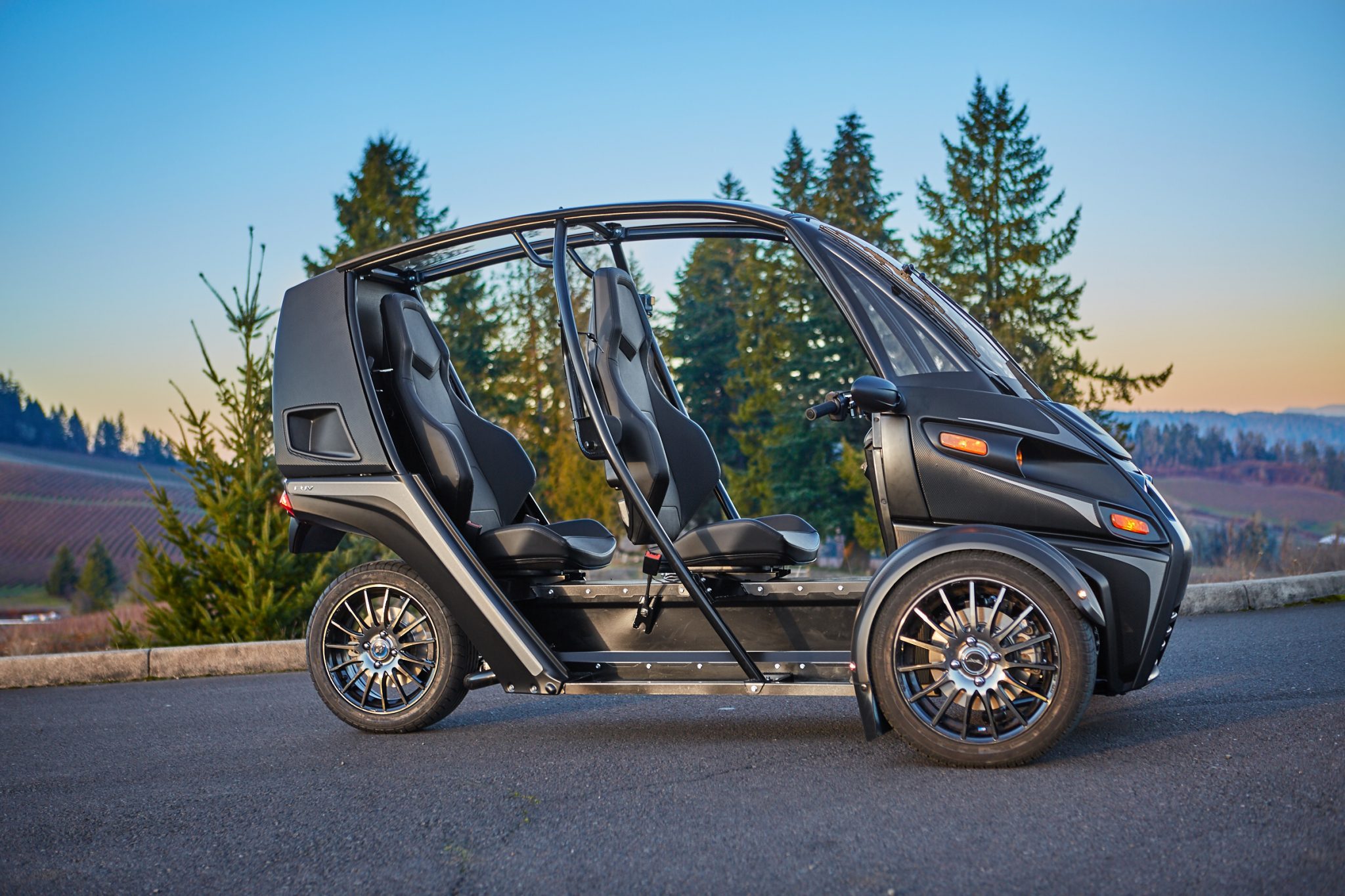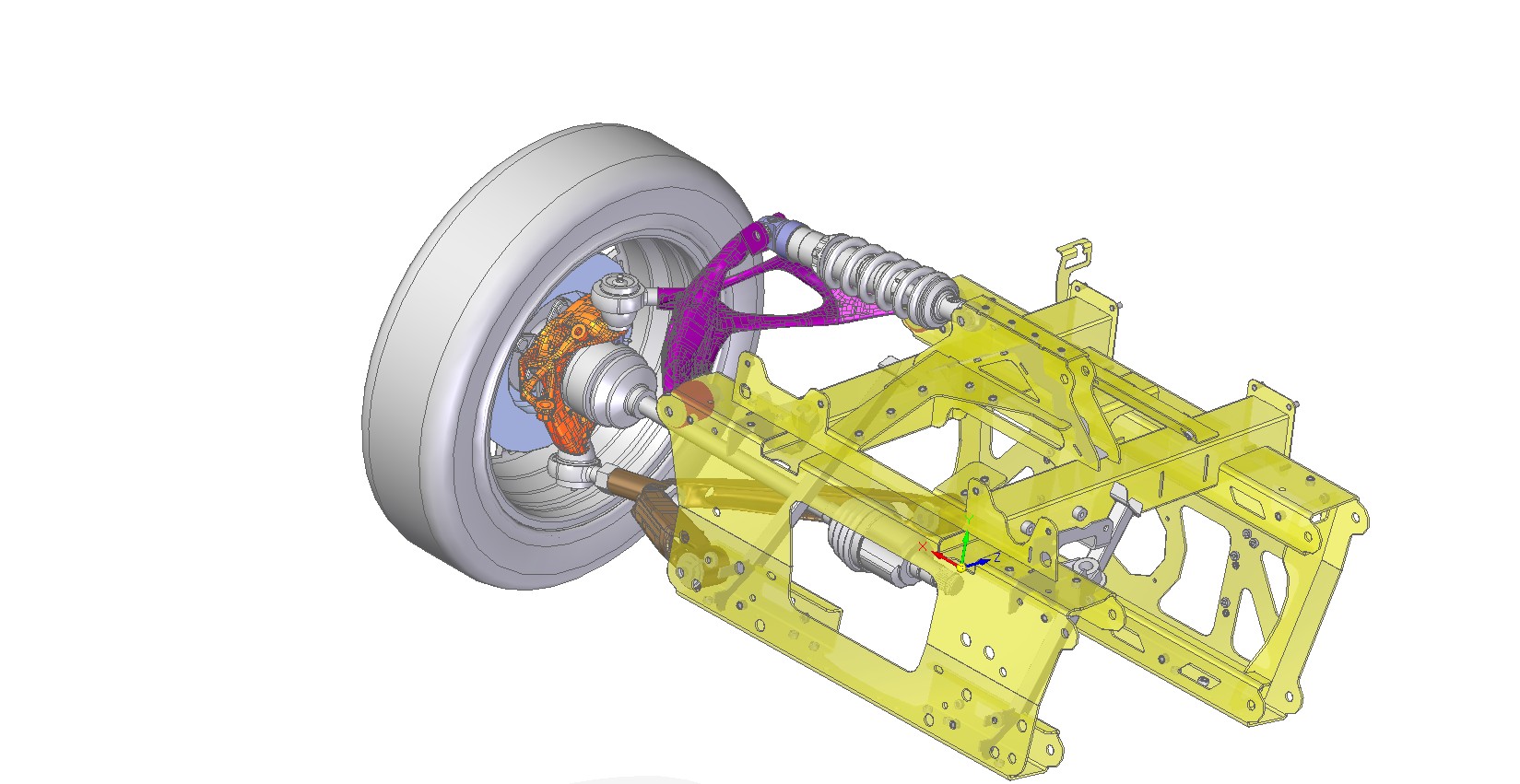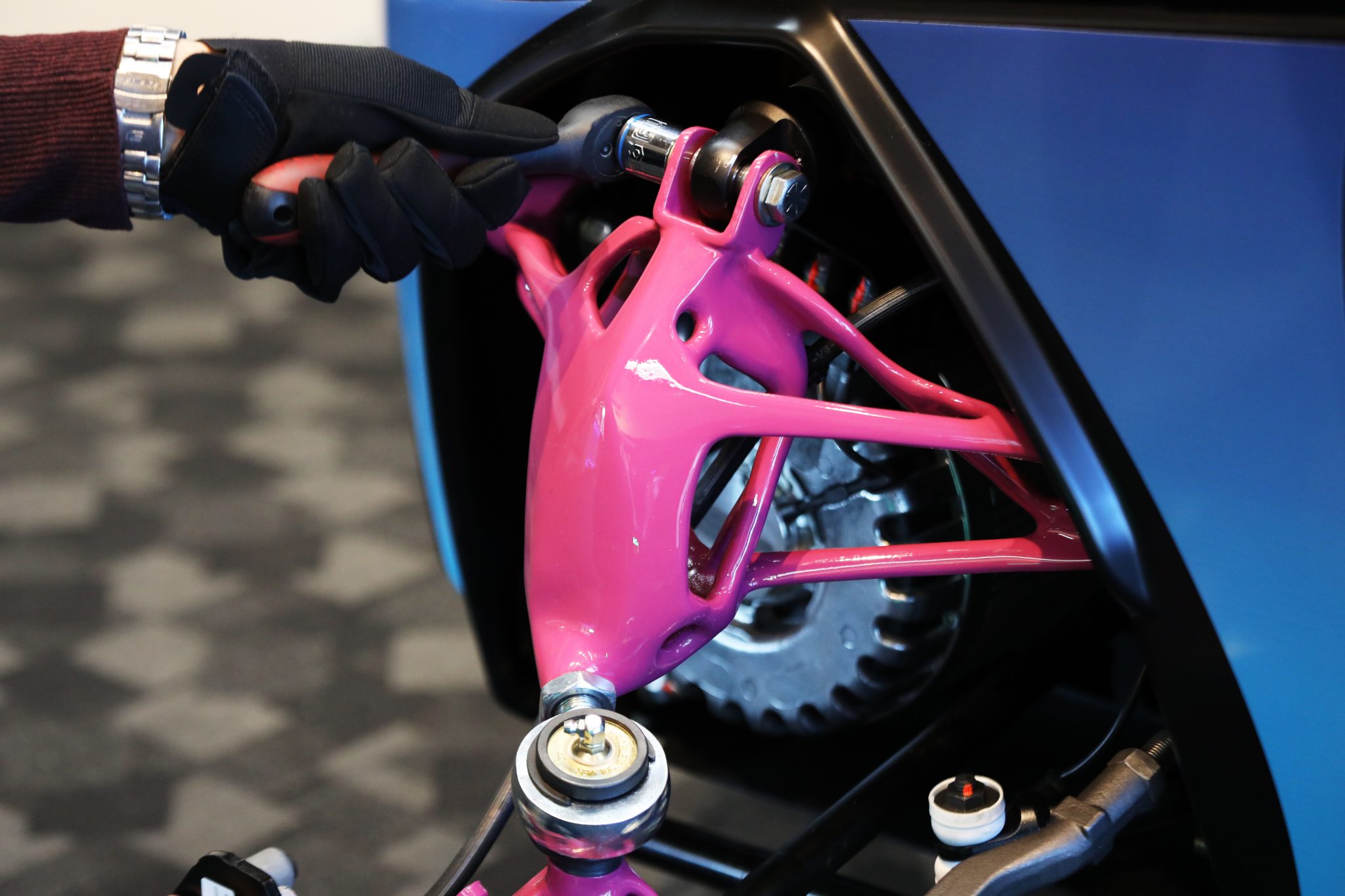XponentialWorks, a combination of venture fund, advisory firm and product developer, has partnered with Arcimoto, an Oregon-based transportation innovator, to produce 3D print lightweight suspension components for Arcimoto’s Fun Utility Vehicle (FUV).
A rear swingarm, knuckle, upper control arm, and a brake pedal, were redesigned using ParaMatters generative design software CogniCAD. These parts were fabricated with the Eosint M 280 industrial metal 3D printer. Avi Reichental, founder and chairman of XponentialWorks, said:
“The entire redesign, from concept to parts, took only four weeks, further demonstrating how 3D printing technology is completely changing how we design and manufacture products.”

A lightweight solution
The Arcimoto FUV is a tandem two-seat, three-wheeled vehicle with a maximum speed of 75 mph (121 km/h) and priced from $19,900. In the essence of being energy efficient, Arcimoto sought to optimize several of its parts using additive manufacturing. ParaMatters’s CogniCAD enabled the automatic combination of different parts into one homogeneous assembly – a previously time-consuming activity.
Furthermore, the heavier components were lighted as a result of generative design. These will be validated to potentially replace the original parts. According to XponentialWorks, the weight of the rear swingarm was reduced by 34%, the knuckle component by 36%, the upper control arm by 52%, and the brake pedal by 49%. Mark Frohnmayer, CEO of Arcimoto, explained:
“Our mission to rightsize the footprint of daily mobility means a continued
commitment to optimizing not just the vehicle platform architecture, but all of its
constituent parts as well. The speed at which the XponentialWorks team has made
meaningful weight improvements to core components of the FUV is truly
impressive.”

AI and additive manufacturing
CogniCAD, which is cloud-based, generates structures with consideration to mechanical performance, stress, and deformation that informs fatigue considerations.It incorporates a broad optimization feature set that covers vibration considerations, metamaterials, and mesostructures similar to those found in human bone.
“With the powerful combination of AI-generated designs and ultra-fast 3D printing
processes, we are now able to create complex geometric structures which substantially
lightweight vehicles, improve performance, lower production costs and save on battery
power,” added Reichental.
“In this new age of industry 4.0 manufacturing, no one company can do it all alone. This project demonstrates the power of curating relationships and building joint innovation programs that pool together resources and expertise from complementary organizations to create practical tractable products in record time.”

Subscribe to our 3D Printing Industry newsletter and follow us on Facebook and Twitter for more additive manufacturing news. Also, visit our 3D Printing Jobs board to find out more about opportunities in additive manufacturing.
Featured image shows the Arcimoto’s Fun Utility Vehicle is integrated with 3D printed suspension parts. Photo via Arcimoto.
